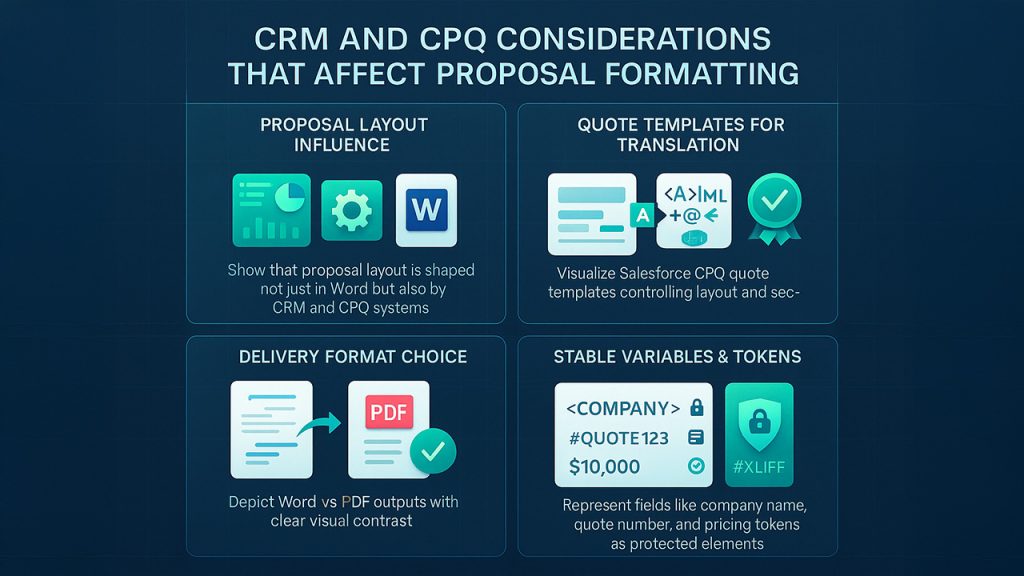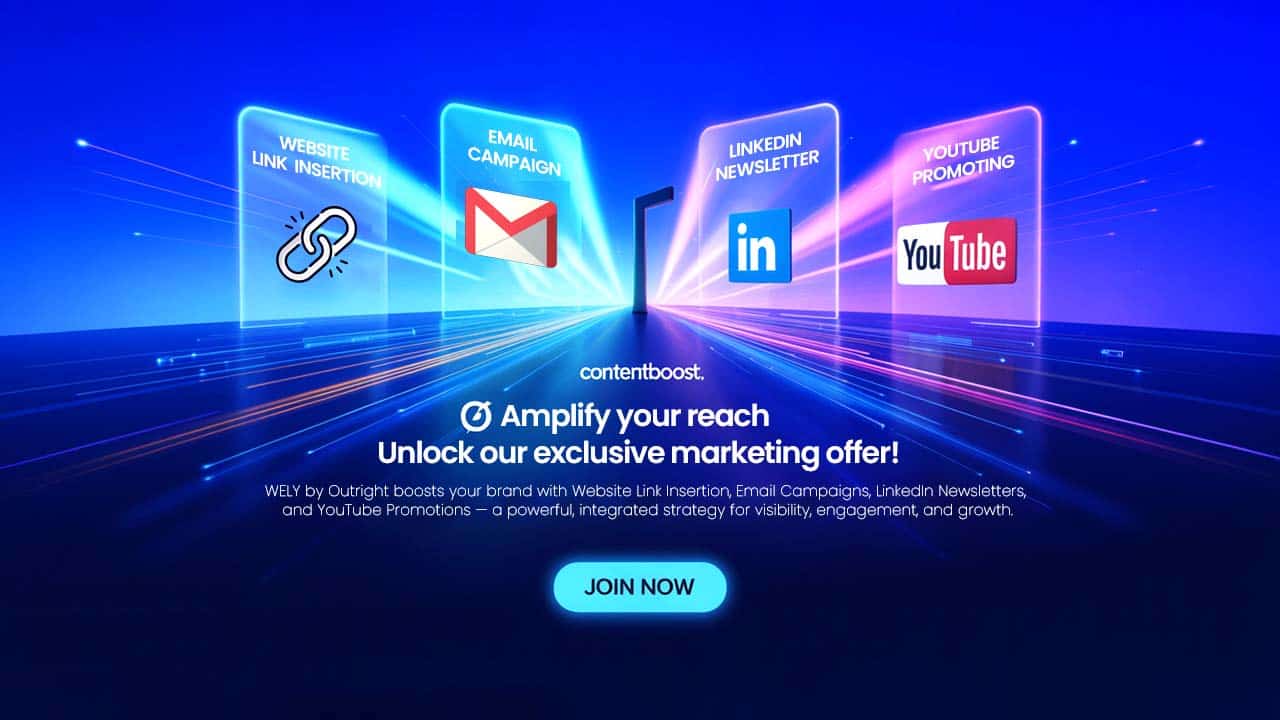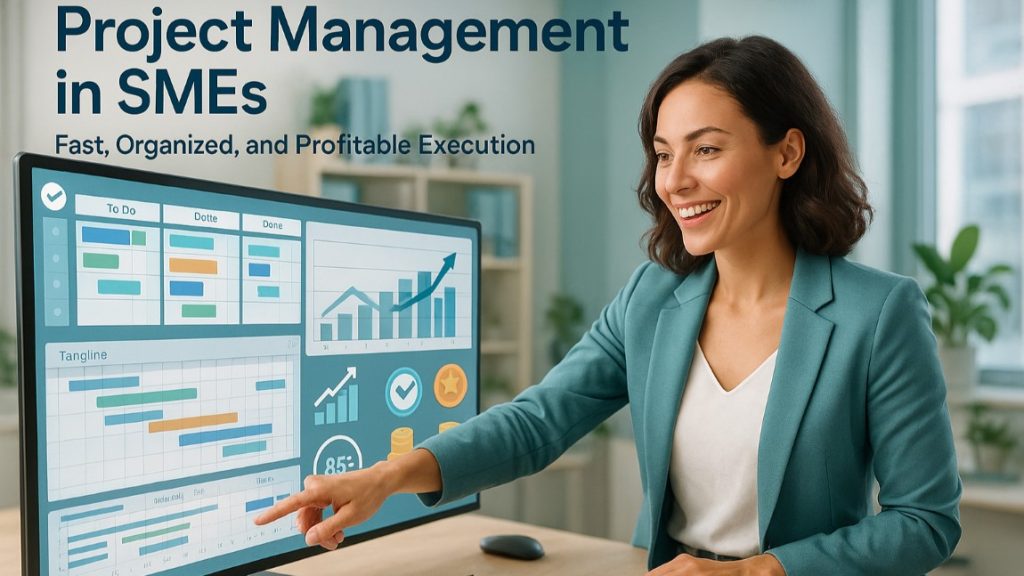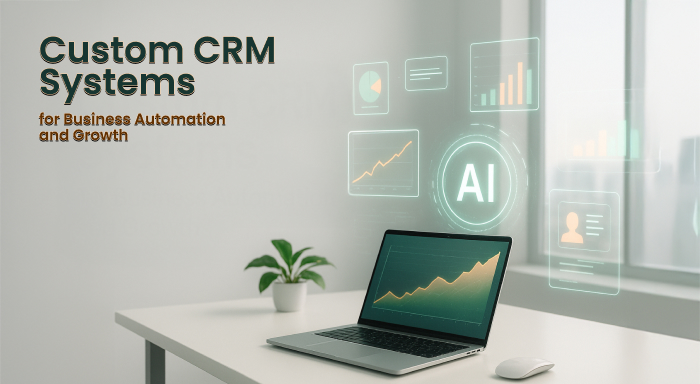CRM proposals live or die on clarity. Marketing writes the brief, sales shapes the offer, and solution teams add technical details. By the time a bid goes to a client
CRM proposals live or die on clarity. Marketing writes the brief, sales shapes the offer, and solution teams add technical details. By the time a bid goes to a client in another language, one broken table or misaligned price column can obscure your value. Translation does not have to break layout. With the right workflow, you can move from brief to bid with accurate text, intact formatting, and minimal rework.
Why Layout Breaks During Translation
Translation changes how much space text needs. A short English label often becomes longer in German or Spanish. W3C guidance shows that text expansion is common and that smaller strings tend to expand more, which squeezes headings, buttons, tables, and callouts if the layout is rigid. Fonts, hyphenation rules, and line breaking also vary across scripts and languages, which can shift wrapping and push elements out of alignment.
File formats matter too. DOCX stores content and formatting as structured XML, which tools can map reliably when done right. PDF is a final form and is harder to edit without layout loss, especially if elements were flattened or the file contains scanned pages. Teams often run into issues when converting between editors or moving a Word file into Google Docs and back. Those round trips can change spacing, line breaks, and font substitutions.
The Brief-To-Bid Path That Protects Formatting
A clear process reduces surprises later. The steps below align to how proposal teams plan content, manage compliance, and package documents for delivery.
Map The Source Files You Will Translate
Proposals usually start in DOCX, then export to PDF for delivery. Keep DOCX as your source. Office Open XML is designed for structured content, which helps translation tools preserve styles and layout. If you must translate slides or spreadsheets, keep them in PPTX or XLSX rather than exporting to PDF first. Tomedes’ document translation guidance also targets Office Open XML formats, which underscores why native source files are safer than PDFs.
For modular text like boilerplate, product descriptions, or UI snippets pulled into templates, consider XLIFF. It is a localization exchange standard that carries text segments plus context, so you can translate without touching the visual template. Many enterprise translation tools support XLIFF 1.2 or 2.1.
Align With Proposal Compliance Early
Formatting is not cosmetic in a bid. Many RFPs set strict rules on type size, margins, and page counts. The APMP Body of Knowledge stresses that consistency and compliance are core to credibility and that teams should use a shared template from the start. Add a compliance matrix to tie every requirement to a section and page. That reduces late edits that often break layout.
Build A Layout-Safe Translation Pipeline
Each step has a purpose. Follow them in order to protect both accuracy and presentation.
- Lock Your Template And Styles. Use a master DOCX template with defined Heading, Body, Table, and Caption styles. Avoid manual formatting where possible because styles translate predictably. Guides on preparing Word documents for translation show that consistent styles reduce post-translation cleanup.
- Clean The Source. Accept tracked changes, remove unresolved comments, and expand all fields. Place figures with anchored positions. Name tables and images. These small steps prevent content from drifting.
- Translate In A Document-Aware Tool. Use a document translator that accepts DOCX and keeps styles, headings, and tables intact. If you also need to compare multiple engines for accuracy, evaluate a multi-engine AI translator that preserves layout for DOCX and PDF. A single pass with side-by-side outputs lets reviewers choose the best segment without reformatting the file.
- Handle PDFs Correctly. If the only source is a PDF, prefer a tool that translates inside a layout view and lets you preserve formatting. Acrobat’s workflow allows in-app translation with layout preservation. For scanned PDFs, run OCR first and verify headers, footers, and tables.
- Move CRM Blocks Through XLIFF When You Can. For content injected by your CRM or CPQ into quote templates, export those text segments to XLIFF. Translate them and reimport, leaving the template untouched. That protects placeholders, variables, and page geometry.
- Avoid Fragile Conversions. Translating in one editor and finishing in another can alter spacing and fonts. Google Docs and Word have different layout engines, and support threads show that round trips can change formatting. Keep editing and translation in the same environment when possible.
- Run A Targeted QA Pass. Check numbers, dates, product names, and legal clauses first. Then confirm tables, captions, cross-references, and figure callouts. W3C notes that text often expands in translation, so scan for clipped headings and wrapped labels.
- Export And Freeze Delivery. Deliver as PDF once the DOCX is approved. Archive the source and the translated DOCX for future updates.
If your team needs help with template discipline or CRM integration around proposals, OutRight Systems outlines how it approaches custom CRM development for migrations, integrations, and templating.
CRM And CPQ Considerations That Affect Formatting

Proposal layout does not live only in Word. Your CRM and CPQ shape it too.
Use Quote Templates Designed For Translation
Salesforce CPQ uses quote templates to control layout and sections. Keep the template simple, rely on styles, and avoid hard-coded formatting. Salesforce’s documentation explains how templates drive structure and how HTML and merge fields populate content. This is where you protect page geometry before any translation happens.
Choose Delivery Format With The End In Mind
Some teams prefer Word files for final edits. Others mandate PDF for consistency and signature workflows. Salesforce CPQ allows administrators to give users a choice of Word or PDF output. Set a standard per market and stick to it so reviewers know what to expect and translation QA can focus on a single path.
Keep Variables And Tokens Stable
Fields like company name, quote number, and pricing tokens must not be translated. Mark them as non-translatable in your translation tool or protect them with placeholders. XLIFF supports protecting inline codes so they cannot be altered during translation.
Accuracy And Consistency Without Rework
Accurate text in the wrong place still fails the bid. Tie linguistic quality to layout checks so reviewers do not chase formatting late.
Build A Practical Review Packet
Provide three synchronized assets to reviewers:
- The translated DOCX with tracked edits off.
- A bilingual or side-by-side view for spot checking terms.
- A compliance matrix that shows page and section where each requirement is answered.
This mirrors proposal best practices and speeds sign-off.
Plan For Text Expansion
Design tables and boxes to flex. Allow extra line height in headings. Avoid fixed-width labels where possible. W3C’s internationalization guides call out text expansion and non-Latin wrapping rules. If your template anticipates growth, you will save hours across languages.
Treat Fonts And Scripts As First-Class Citizens
Use fonts with broad language support and clear numerals. Test hyphenation and line breaking for your target languages. If you must switch fonts per market, set that logic in the template rather than manual edits.
Security, Privacy, And Retention
Proposal documents hold client data and pricing. Translation should not expose that information. Encrypt storage, limit who can access drafts, and minimize copies. If you serve clients in the EU or handle EU resident data, refresh your practices against GDPR duties like transparency, access control, and risk assessment. OutRight Systems provides a practical overview of GDPR security measures and transparency requirements.
Troubleshooting Common Formatting Failures
Even tight teams hit snags. These are the patterns you will see most, with quick fixes.
- Headings Wrap Or Clip After Translation. Increase heading line height. Allow the text box to grow. Shorten labels where possible. Anchor images below headings rather than beside them to avoid collisions. W3C recommends accommodating expansion proactively.
- Tables Break Or Columns Shift. Use tables with percentage widths. Avoid nested tables. Keep numeric fields right aligned and lock decimal precision across languages. Verify column headings after translation for length.
- Lists Lose Indentation. Ensure bullets and numbering come from styles, not manual tabs. Check that the translated list style exists in the target template.
- Variables Translate Or Disappear. Protect merge fields and tokens. If using XLIFF, keep inline codes intact so placeholders survive round trips.
- Google Docs To Word Round Trips Change Spacing. Finish translation in the same editor where layout was designed. If you must switch, expect to reset spacing and check fonts due to different layout engines.
Metrics That Tell You The Process Works
Pick a small set of metrics that correlate to less rework and better delivery.
- Layout Defect Rate. Count formatting defects found during final QA per document. Track by language and template to find hotspots.
- Turnaround Time To Final PDF. Measure from translation start to approved PDF. Look for gains as templates improve.
- Compliance Variance. Track page count and font size violations found late. Fewer violations indicate better template discipline.
- Reviewer Effort. Record hours spent on formatting fixes. Your goal is to shift effort into template design and early checks.
FAQs
What File Format Is Best For Translating Proposals Without Breaking Layout?
Use DOCX as your source and export to PDF for delivery. Additionally, use office Open XML to store content and Structured XML for formatting. These translation tools offer more reliable layout preservation compared to PDF editing workflows.
preserve more reliably than PDF editing workflows.
Can we translate directly inside a PDF and keep the layout?
Yes, sometimes. Acrobat currently offers in-app translation with features for predefined layouts. As static, direct PDF editing can be vulnerable; they first convert complex or scanned PDFs to a customized format with OCR and then translate.
What are the different ways to keep CRM quote templates uniform across languages?
Define a simple, style-driven template in CPQ. Leverage combined fields for evolving data and deliver modern output format based on market to users. merge fields for dynamic data. Give users a standard output format per market. Salesforce documentation interprets the way templates manage layout and transmit PDF or Word outcome.
What If Our Team Uses Google Docs And Our Partners Use Word?
Mixed environments can change spacing and fonts when files move between editors. Freeze layout in final DOCX and manage translations in the mixed environment to mitigate surprises, if your team working across different tools.
Do We Need Specialized Formats Like XLIFF?
Use XLIFF when translating modular text that your CRM injects into templates. XLIFF carries bilingual segments and protects inline codes, which keeps variables and layout markers safe.
Conclusion
Proposals win on clarity, not on last-minute formatting fixes. Keep DOCX as your source. Translate with tools that respect styles and tables. Protect variables and tokens. Anticipate text expansion in templates. Align with proposal compliance from the start and reduce rework through a simple QA checklist. The consequences are an accelerated path from outline to transmission with precise content and static designs
Respond to this article with emojis






